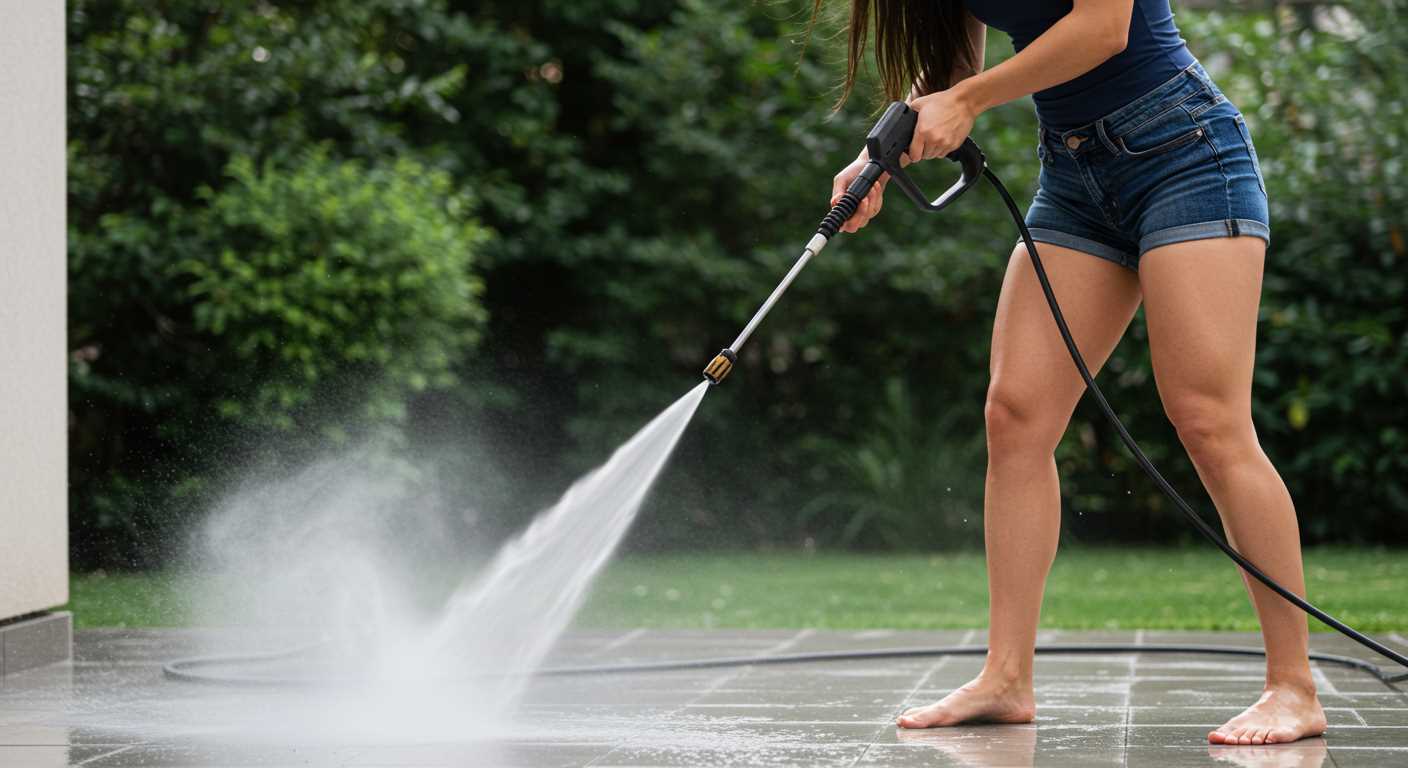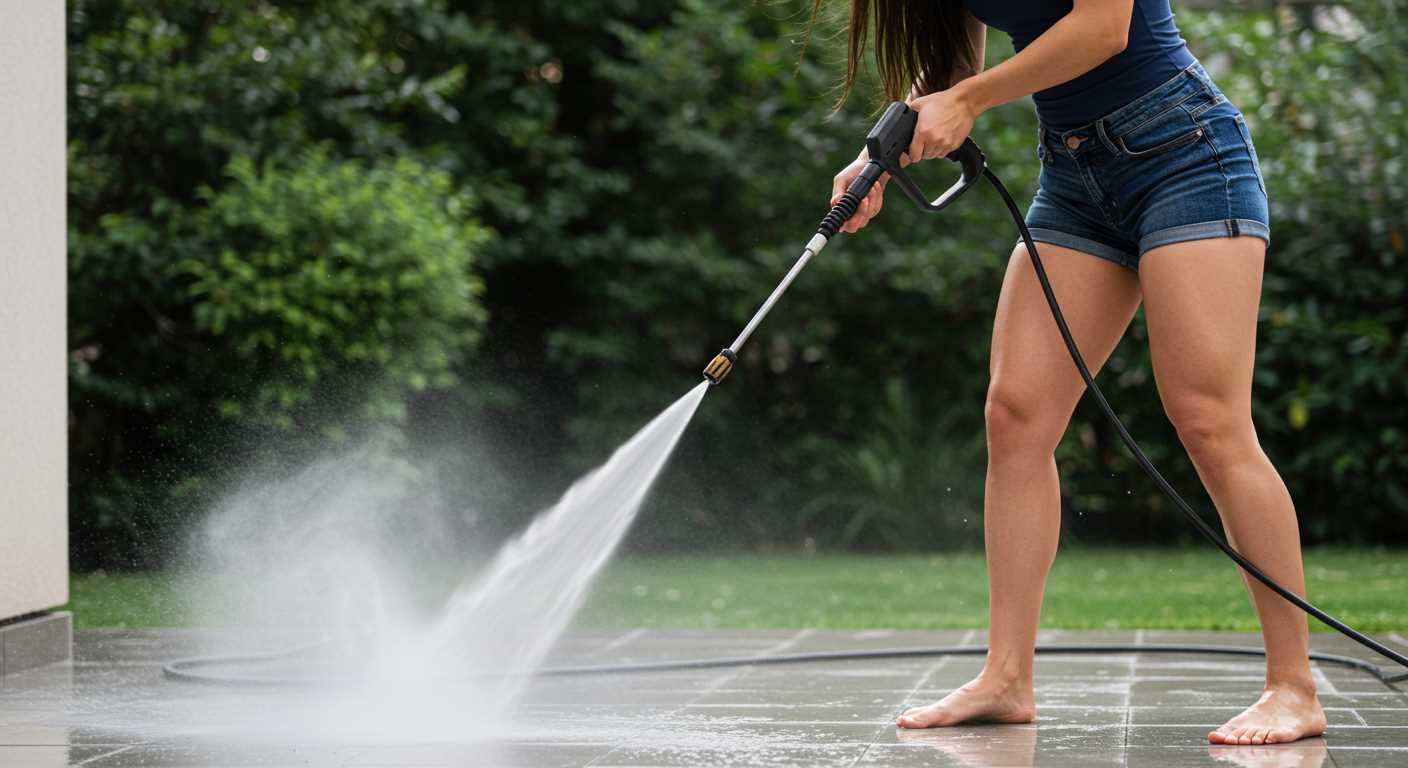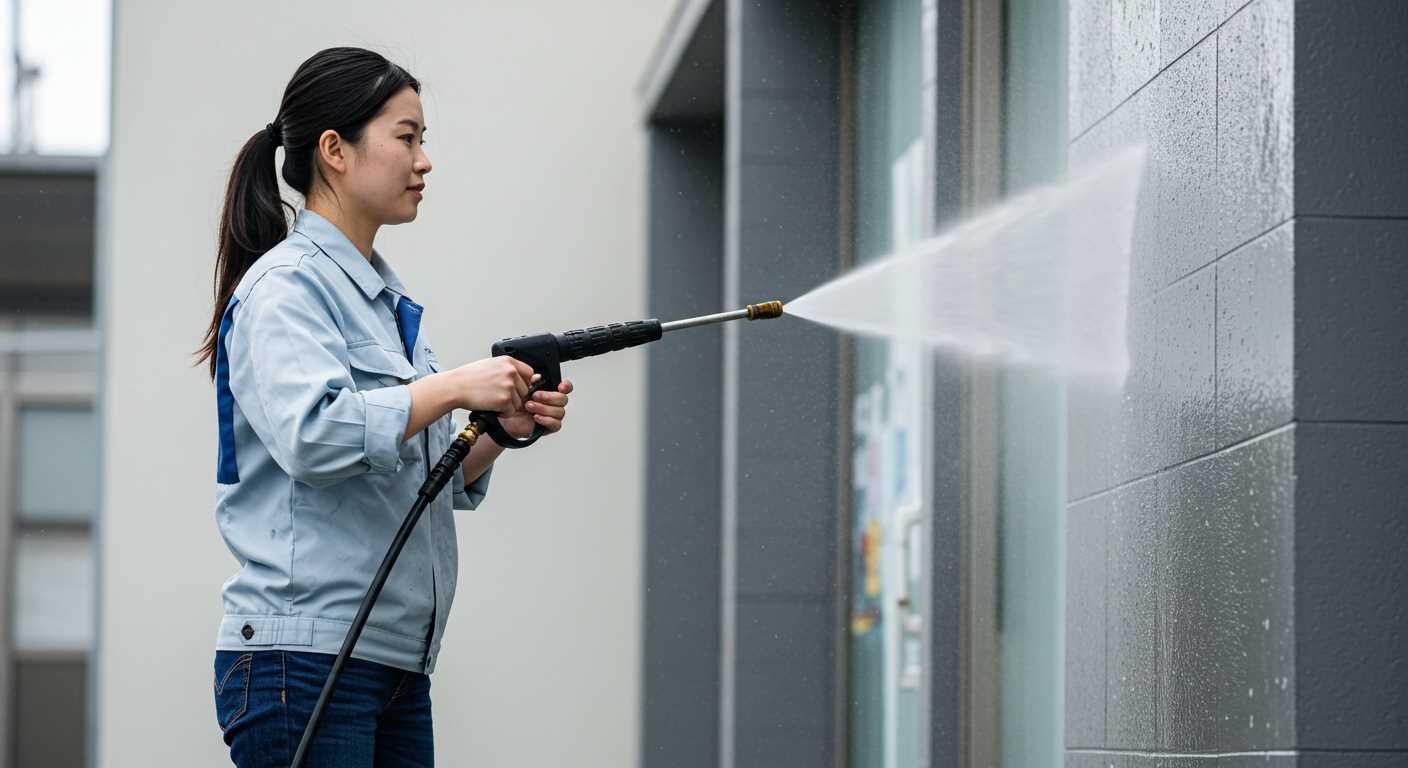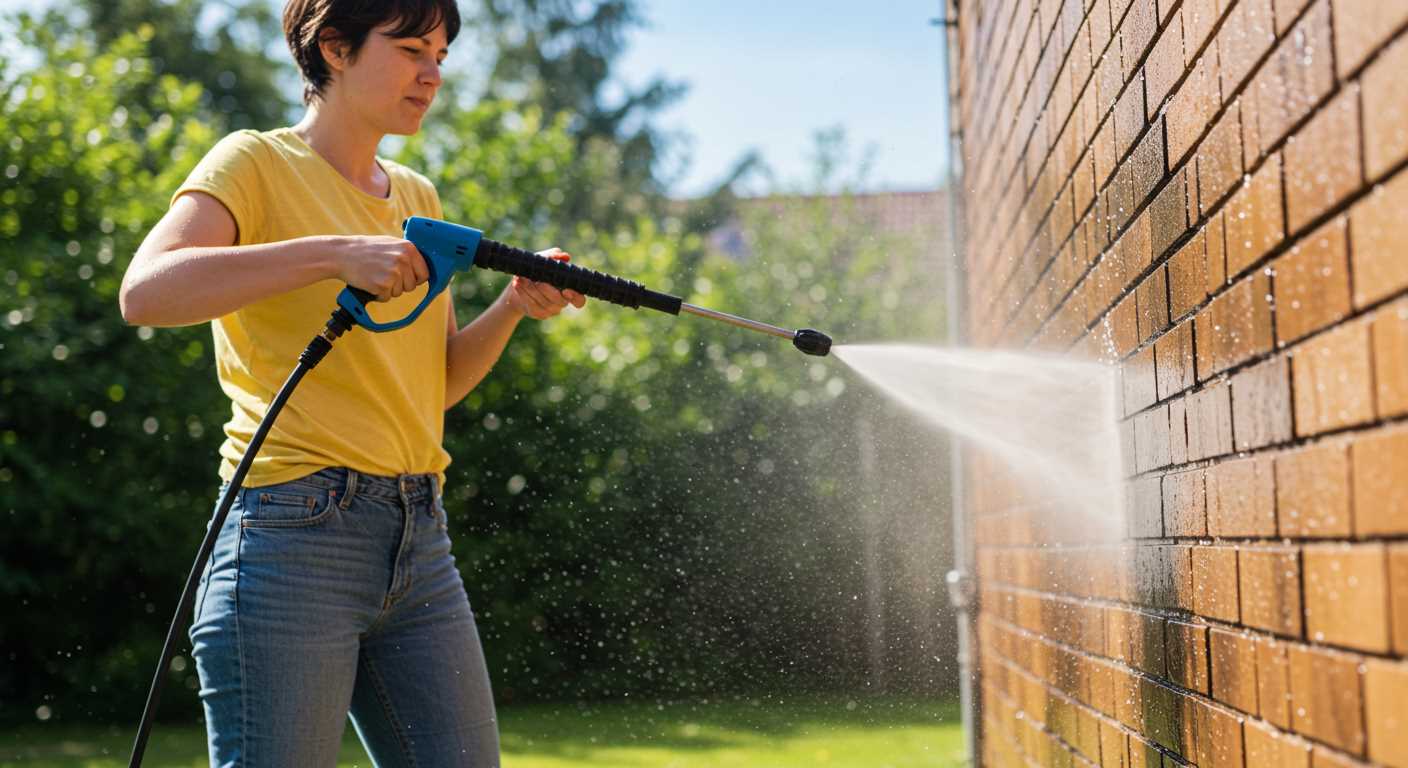




Yes, a high-pressure cleaner can effectively eliminate stubborn discolorations from your outdoor surfaces, but it requires careful handling and the right technique. In my years of experience testing various models, I found that the effectiveness depends greatly on the type of cleaning solution used and the pressure setting applied. Using too much force can damage the wood or composite materials, while too little may not yield any noticeable results.
During one of my projects, I tackled a particularly challenging patio that had absorbed dark pigments from years of neglect. I started with a lower pressure setting and used a specially formulated cleaning agent designed for outdoor surfaces. This combination not only lifted the old colour but also prepared the surface for a fresh application of protective finish. It’s essential to allow the cleaning solution to sit for a few minutes to penetrate the stains before rinsing it off with a gentle spray.
Always keep the nozzle at a safe distance from the surface to avoid gouging or causing unnecessary wear. A fan spray pattern can help distribute the water more evenly, reducing the risk of damage. After the initial clean, I recommend rinsing with plain water to remove any remnants of the cleaning solution, ensuring the surface is ready for the next stage of care.
Can High-Pressure Equipment Eliminate Wood Treatments?
Yes, using high-pressure equipment can effectively strip wood treatments, depending on the technique and settings applied. I’ve tested various models, and the results can vary significantly based on several factors.
First, the nozzle type plays a crucial role. A narrow spray pattern, such as a 15-degree nozzle, generates intense force that can penetrate surfaces more deeply, making it more suitable for tackling stubborn coatings. However, caution is necessary to avoid damaging the wood.
Second, distance from the surface matters. Maintaining a proper distance–generally around 12-18 inches–helps to control the force while ensuring an even removal process. Getting too close can cause gouging or splintering, especially on softer woods.
Temperature of the water also influences the outcome. Warm water can aid in breaking down the compounds in the treatment, enhancing effectiveness. I often found that using heated water alongside a suitable detergent could substantially improve results.
Lastly, consider the condition of the wood. Older, weathered surfaces might respond differently than newer treatments. In my experience, thoroughly testing a small, inconspicuous area before tackling the entire surface can save time and prevent potential mishaps.
Understanding Deck Stain Types and Their Removal
Different types of finishings require specific approaches for their elimination. Oil-based formulations penetrate wood deeply, providing rich colour and durability but complicating extraction. Water-based alternatives sit on top, making them somewhat easier to eliminate. Knowing the type of product used is critical for successful treatment.
Identifying the Right Approach
For oil-based finishes, solvents or specially formulated products are often necessary. A thorough application can break down the bond with the wood, allowing for effective extraction. For water-based stains, a combination of scrubbing and chemical solutions often yields satisfactory results without damaging the wood.
Preparation is Key
Before starting, assess the wood’s condition. Look for signs of wear, rot, or previous treatments that could affect the extraction process. Proper preparation can save time and ensure better results. Cleaning the surface beforehand may help, as it allows the extraction agents to work more effectively, especially if the wood has accumulated dirt or mildew.
How Pressure Washers Work: A Closer Look
Understanding the mechanics behind these machines can enhance your cleaning approach. Essentially, the core function is simple: a motor powers a pump that draws in water and forces it through a narrow nozzle. The result is a focused stream that amplifies the water’s impact force, making it ideal for lifting tough residues.
Components and Functionality
At the heart of every unit is a pump, which can be either axial or triplex design. Axial pumps, common in entry-level units, are less durable but more affordable. Triplex pumps, found in higher-end models, offer superior longevity and performance. The motor, often electric or gas-powered, dictates the level of convenience and portability. When selecting a model, consider the pressure output, typically measured in PSI (pounds per square inch). Higher PSI translates to more cleaning power, but using excessive force can damage surfaces, so balance is key.
Water Temperature and Nozzle Selection
Water temperature plays a significant role in the cleaning process. Hot water enhances the ability to dissolve grime and oil-based substances, making it particularly effective for certain tasks. Additionally, nozzle selection affects the spray pattern and intensity. From wide fans for gentle cleaning to pinpoint streams for stubborn spots, choosing the right nozzle is crucial for achieving the desired results without causing harm.
Preparing Your Deck for Pressure Washing
Before tackling the task, ensure the area is clear of furniture, grills, and potted plants. This creates a safe working environment and prevents damage to your belongings. Take the time to cover any nearby electrical outlets and light fixtures with plastic sheeting to protect them from water exposure.
Next, inspect the surface for any loose boards or nails sticking out. These can pose a hazard during cleaning. Fasten any loose boards and hammer down protruding nails to avoid injuries and equipment damage.
Consider sweeping the surface to remove debris, leaves, and dirt. A clean surface allows for better results and helps the cleaning solution to work effectively. For additional cleaning, you might want to use a car wash liquid for pressure washer to pre-treat any areas with stubborn grime or mildew.
Check the weather forecast. Aim for a dry day, as wet conditions can hinder the drying process post-cleaning. If the forecast predicts rain, it’s best to postpone the job to avoid complications.
Finally, gather all necessary equipment and supplies, including the cleaning agent, extension cords, and protective gear. This preparation will streamline the process and ensure you have everything you need on hand.
Choosing the Right Settings for Stain Removal
For optimal results, set the machine to a lower pressure level, typically between 1500 and 2000 PSI. This range is gentle enough to avoid damaging the surface while still being effective against built-up coatings. Use a fan nozzle attachment, preferably a 25-degree or 40-degree tip, for a wider spray pattern that helps distribute water evenly. A concentrated jet can strip too aggressively, which might result in unwanted surface abrasion.
Temperature and Cleaning Solutions
Heat can enhance cleaning performance. If your device includes an option for hot water, use it to help break down stubborn residues. Additionally, incorporating a suitable cleaning solution designed for the surface type will aid in loosening the layers of old coating. Make sure to apply the solution before washing, allowing it to dwell for a few minutes to penetrate effectively.
Technique for Application
Maintain a distance of at least 12 to 18 inches from the surface while working. Move the nozzle in a consistent, sweeping motion, overlapping each pass slightly to ensure thorough coverage. Avoid staying in one spot for too long to prevent surface damage. Following these guidelines will help achieve a clean and refreshed look without compromising the integrity of the underlying material.
Best Practices for Pressure Washing Decks
Before getting started, it’s crucial to choose a dry day for the task. Wet surfaces can lead to slips and accidents, plus moisture can interfere with the drying process post-cleaning. Here are some key practices to follow:
Preparation Steps
- Remove furniture and any obstacles from the area.
- Check for loose boards or nails and secure them to avoid damage.
- Clear away debris, including leaves and dirt, to ensure a clean surface.
Technique and Safety
- Always wear protective gear, including goggles and gloves, to shield yourself from debris and chemicals.
- Maintain a consistent distance from the surface; around 6 to 12 inches is generally effective without causing harm.
- Use a sweeping motion rather than a concentrated blast to prevent gouging the wood.
It’s wise to start with a lower setting and gradually increase the intensity if needed. This prevents damage and allows you to assess how the surface responds. Test a small, inconspicuous area first to determine the best approach.
After cleaning, allow adequate drying time before applying any new finish. This ensures that the surface is ready to absorb the product properly, leading to a longer-lasting result.
Potential Risks of High-Pressure Cleaning Stains
Using a high-pressure device can lead to unintended consequences. Damage to the wood surface is a common issue. When the force is too high, it can strip away not only the unwanted finish but also the top layer of the wood, resulting in splintering and rough patches.
Surface Damage
- Softwood species, like pine or cedar, are particularly vulnerable to gouging.
- Repeated exposure may lead to uneven surfaces that require extensive sanding or replacement.
- Inadequate distance from the surface can exacerbate these problems, causing irreversible harm.
Mould and Mildew Growth
- Inadvertently forcing water into the wood can create a conducive environment for mould and mildew.
- Trapped moisture may not evaporate quickly, leading to long-term deterioration.
- Look for signs of water retention, especially in shaded areas that don’t receive direct sunlight.
It’s prudent to consider the type of wood and existing finishes before proceeding. A thorough inspection can reveal vulnerabilities. Always test a small, inconspicuous area first. This way, you can assess the impact on the surface without risking the entire structure. My experience has taught me that a cautious approach is better than dealing with the aftermath of careless cleaning. For example, I once encountered a homeowner who attempted to clean their patio with excessive force; the result was a rough, damaged surface that required professional refinishing.
Also, ensure safety precautions are in place. Flying debris can pose a hazard not only to the operator but also to bystanders. Eye protection and appropriate clothing are non-negotiable. Remember, a digital camera captures images on the photosites of a, and similarly, a high-pressure device captures all imperfections and damages in its wake.
Alternative Methods for Deck Stain Removal
Using chemical strippers can be an effective way to tackle unwanted finish. I’ve seen a range of products, from eco-friendly options to more aggressive formulations. Always check the manufacturer’s instructions for application methods and drying times. A brush or roller can help ensure even coverage, and a plastic scraper is handy for lifting the softened residue. It’s vital to wear gloves and a mask to protect yourself from fumes.
Natural Solutions
Vinegar is a surprisingly effective agent for light stains. Its acidity can break down certain finishes without harsh chemicals. Mix equal parts vinegar and water, apply it to the surface, and let it sit for a few minutes before scrubbing with a stiff brush. This method works best for minor blemishes but may require multiple applications for tougher jobs.
Sandblasting and Abrasive Methods
For a more aggressive approach, sandblasting can strip away layers quite effectively. This method requires specific equipment and safety precautions, as the fine particles can be harmful if inhaled. If you opt for this method, ensure you’re wearing protective gear, and cover surrounding areas to prevent damage from flying debris.
| Method | Advantages | Disadvantages |
|---|---|---|
| Chemical Strippers | Effective on tough finishes | Can be harmful, requires careful handling |
| Vinegar Solution | Natural and non-toxic | May need multiple applications |
| Sandblasting | Fast and thorough | Requires special equipment and safety gear |
Each method has its place depending on the condition of the surface and your comfort level with chemicals and equipment. Always test a small area before committing to any method, as results can vary based on material and previous treatments.
FAQ:
Can a pressure washer effectively remove deck stain?
Yes, a pressure washer can effectively remove deck stain, but the results depend on several factors. The type of stain, the age of the stain, and the wood type all play a role. Older stains may require more intensive cleaning techniques, while newer stains may come off more easily. Additionally, using the right nozzle and pressure settings is crucial to avoid damaging the deck.
What is the best pressure setting to use when removing deck stain?
The best pressure setting for removing deck stain typically ranges from 1500 to 2500 PSI. Lower settings are safer for softer woods to prevent damage, while harder woods can withstand higher pressures. It’s wise to test a small, inconspicuous area first to determine the appropriate setting for your specific deck without causing harm.
Should I use any special cleaning solutions with my pressure washer for deck stain removal?
Using a special cleaning solution can enhance the effectiveness of the pressure washer when removing deck stain. Look for products specifically designed for deck cleaning or stain removal. These solutions can help break down the stain more effectively than water alone. Always follow the manufacturer’s instructions for dilution and application to achieve the best results.
What precautions should I take when using a pressure washer on my deck?
When using a pressure washer on your deck, take several precautions to ensure safety and avoid damage. First, wear protective gear, including goggles and gloves. Second, ensure that electrical connections are safe and that the area is free of any debris or obstacles. Third, maintain a consistent distance from the surface, usually around 12 to 18 inches, to prevent gouging the wood. Finally, work in sections and avoid staying in one place for too long to prevent damage.
Is it necessary to sand the deck after using a pressure washer to remove stain?
Sanding the deck after using a pressure washer to remove stain is often recommended. This step helps to smooth out the wood surface and prepares it for a new stain application. After pressure washing, any remaining rough spots or raised wood fibres can be smoothed out with sandpaper. This ensures that the new stain adheres properly and provides a uniform finish.




.jpg)


